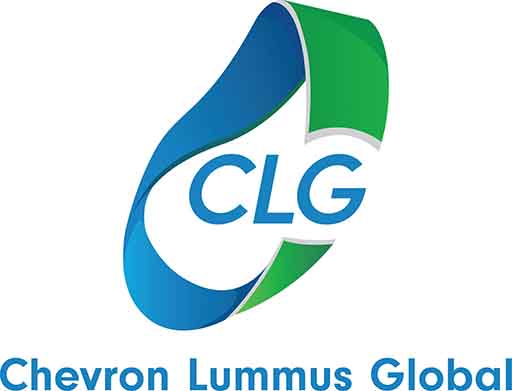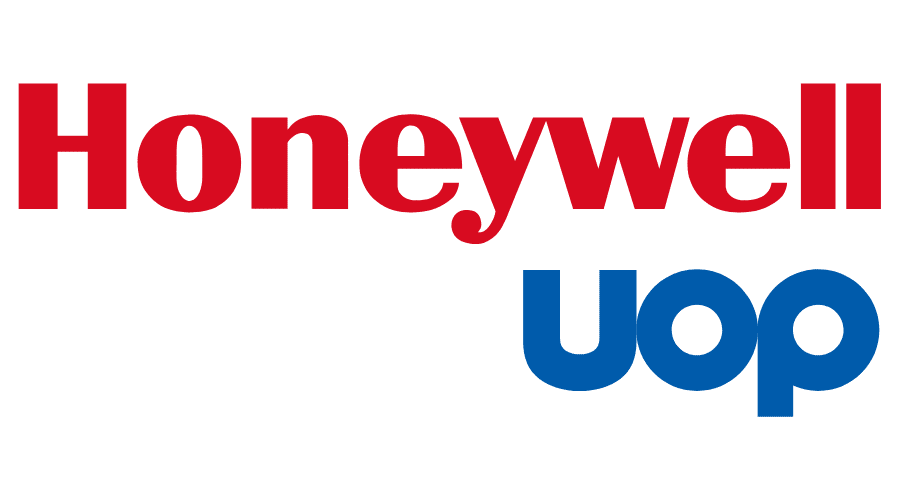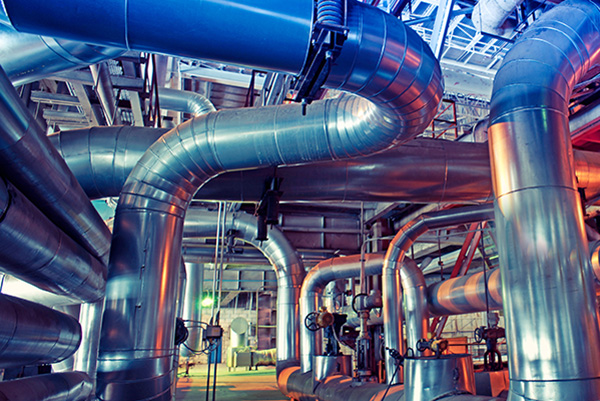Hydrocracking is a Catalytic Chemical Process used in Petroleum Refineries for converting the High-Boiling Constituent Hydrocarbons in Petroleum Crude Oils to more valuable Lower-Boiling Products such as Gasoline, Kerosene, Jet Fuel and Diesel Oil. The Process takes place in a Hydrogen-Rich Atmosphere at elevated temperatures (260 – 425 °C) and pressures (35 – 200 bar).[1]
Basically, the Process cracks the High-Boiling, High Molecular Weight Hydrocarbons into Lower-Boiling, Lower Molecular Weight Olefinic and Aromatic Hydrocarbons and then hydrogenates them. Any Sulfur and Nitrogen present in the Hydrocracking Feedstock are, to a large extent, also hydrogenated and form Gaseous Hydrogen sulfide (H2S) and Ammonia (NH3) which are subsequently removed. The result is that the Hydrocracking Products are essentially free of Sulfur and Nitrogen Impurities and consist mostly of Paraffinic Hydrocarbons.[2]
Hydrocracking Plants are capable of processing a wide variety of Feedstocks of different characteristics to produce a broad range of Products. They can be designed and operated to maximize the production of a Gasoline Blending Component (called Hydrocrackate) or to maximize the production of Diesel Oil.[1]
Table 1 - Range of Feeds and Products in Hydrocracking Processes[3]
| Feeds |
Products |
| Vacuum Gas Oils |
LPG, Light Gases |
| Heavy and Light Coker gas oils |
Heavy and light naphtha |
| Thermal gas oils |
Jet fuel, Kerosene |
| De-asphalted gas oil |
Diesel fuel |
| FCC light and heavy cycle oils |
Low-sulfur fuel oil |
| Vacuum and atmospheric residue |
Olefin, FCC, ethylene cracker, and petrochemical feedstocks |
| Asphalt, tar sands |
Lube oils |
Figure 1 – Residue Upgrading Technologies According to the Contaminants Content[4]
.jpeg)
Different types of Hydrocracking Technologies are in use for Residue Upgrading depending on the level of Contaminants such as Asphaltenes and Metals present in the Residues (Fig. 1) such as:[2],[5]
- Fixed Bed Hydrocracking
- Axens - Hyvahl™Fixed Bed Hydrotreating
- Chevron Lummus Global - Isocracking Technology
- UOP Honeywell - Unicracking™ Process
- Moving Bed Hydrocracking
- Chevron Lummus Global - On-stream Catalyst Replacement (OCR) / Upflow Reactor (UFR)
- Shell - Hycon Moving Bed Technology
- Ebullated Bed / Expanded Bed Reactors
- Axens - H-Oil® Ebullated Bed Hydrocracking
- Chevron Lummus Global - LC-FINING Ebullating Bed Residue Hydrocracking Process (presumably based upon former Texaco's T-STAR Process)
- HTI - HCAT® Process
- Slurry-Phase Hydrocracking
- Chevron Lummus Global - LC-Slurry Technology
- ENI SpA - Eni Slurry Technology (EST)
- ExxonMobil - Microcat-RC™ Technology (obsolete)
- KBR - Veba Combi-Cracking (VCC) Technology
- PVDSA - Hydrocracking Distillation Hydrotreating (HDH Plus) Technology
- UOP Honeywell - Uniflex™ MC Residue Hydrocracking Process
(based upon Natural Resources Canada (NRCan)'s CANMET Hydrocracking Process Technology, acquired by UOP in 2007)
The principles of these Reactor Operations are almost same but differing with respect to some Technical Minutiae and tolerance of Impurities. Generally, Hydrotreatment of the Middle Distillates or a high API Gravity Feeds are conducted in Fixed-Bed Reactors, while more complex Feeds are used in Moving-Bed or Ebullated-Bed Reactors.[5]
A Fixed-Bed Reactor requires continuous Withdrawal of Deactivated Catalysts and immediate Addition of Fresh catalysts. Generally, the Hydrocracking of Heavy Feeds in Fixed-Bed Reactor requires Mixed or Multiple Beds of Catalysts. If the Feed Quality is too low for a Fixed-Bed Reactor, Moving-Bed Reactors in Series or Combinations of Ebullated-Bed with Fixed-Bed Reactors can be effective. In Moving-Bed Reactors, the Fresh Catalyst enters at the Top of the Reactor, and the Deactivated Catalyst leaves the Bottom of the Reactor.[5]
Diffusion of Feeds, Pressure Drop and Mass Transfer are the Problems in Fixed-Bed, Ebullated-Bed or Moving-Bed Reactors. To resolve these important issues and make the Process industrially applicable, Slurry-Phase Hydrocracking is an alternate option.[5] Slurry-Phase Hydrocracking can be used to convert Viscous Feedstock in the presence of Hydrogen under severe Process conditions—on the order of 450°C (840°F) and 2000–3000 psi. To prevent excessive Coking, finely powdered Additives are added to the Feedstock. Inside the Reactor, the Feedstock/Powder Mixture behaves as a Single Phase due to the small size of the Additive Particles.[6]
References
1. Hydrocracking article on Citizendium
2. Based on own research and multiple sources
3. Nasir Hussain, 2 May 2021, Hydrocracking Process in Oil Refinery, THE PETRO SOLUTION
4. Mario Beccari, Ugo Romano, Encyclopaedia of Hydrocarbons: Refining and petrochemicals, Volume 2, ENI, 2006
5. Ramakanta Sahu et al., A review of recent advances in catalytic hydrocracking of heavy residues, Journal of Industrial and Engineering Chemistry, Volume 27, 2015, Pages 12-24, ISSN 1226-086X.
6. James G. Speight, in Heavy Oil Recovery and Upgrading, 2019, via Science Direct.














.jpeg)







